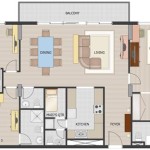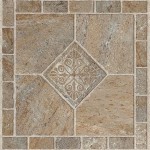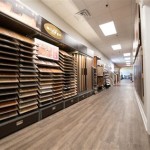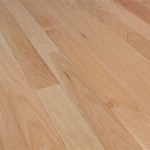Do Rug Pads Damage Hardwood Floors?
Hardwood floors are a prized possession in many homes, offering both beauty and durability. Area rugs often complement these floors, adding warmth and visual interest. However, a common concern among homeowners is whether the use of rug pads can negatively impact the hardwood floor's finish. This article examines the relationship between rug pads and hardwood floors, exploring the potential for damage and providing guidance on pad selection and usage.
Material Matters: Understanding Rug Pad Composition
Rug pads are manufactured from a variety of materials, each with its own set of properties. Natural materials like felt, jute, and rubber are popular choices, along with synthetic options such as PVC and memory foam. Understanding the composition of a rug pad is crucial in assessing its potential impact on hardwood floors. Some materials are more likely to cause discoloration or hinder the wood's ability to breathe, while others might offer better protection.
Ventilation and Moisture: The Importance of Breathability
Proper ventilation is essential for the long-term health of hardwood floors. Trapped moisture can lead to warping, buckling, and the growth of mold or mildew. Certain rug pad materials, particularly those that are non-porous, can restrict airflow and trap moisture against the wood surface. Choosing a breathable rug pad allows for adequate air circulation, minimizing the risk of moisture-related damage.
Chemical Reactions: Staining and Discoloration
Some rug pad materials contain chemicals that can react with the finish on hardwood floors, leading to staining or discoloration. This is particularly true for rubber-backed pads, which can sometimes leave a yellowish or brownish stain, often referred to as "plasticizer migration." Choosing pads made from natural, non-reactive materials can mitigate this risk.
The Grip Factor: Preventing Scratches and Abrasions
While rug pads are designed to prevent rugs from slipping, certain types of grip materials can inadvertently cause scratches or abrasions on the hardwood floor surface. Pads with rough or abrasive backing, or those that utilize adhesive, can potentially damage the finish, especially with frequent movement. Opting for pads with a smooth, non-abrasive grip, such as natural rubber or felt, is recommended.
Padding Thickness and Density: Balancing Comfort and Protection
The thickness and density of a rug pad play a significant role in both comfort and floor protection. Thicker pads offer greater cushioning, but excessively thick pads can also create instability and increase the risk of tripping. Dense pads provide better support and protection against impact, but may also restrict airflow. Striking the right balance between thickness, density, and breathability is essential.
Regular Maintenance and Inspection: Proactive Care
Regardless of the type of rug pad used, regular maintenance and inspection are crucial for preventing damage to hardwood floors. Periodically lifting the rug and pad to clean underneath and inspect the floor for any signs of discoloration or damage is essential. This allows for early detection of any potential issues and prompt corrective action.
Considering the Finish: Compatibility with Hardwood Floor Sealants
Different types of hardwood floor finishes, such as polyurethane, wax, or oil-based sealants, have varying degrees of sensitivity to rug pad materials. Researching the compatibility of a rug pad with the specific finish on your hardwood floor can help avoid potential issues. Consulting with a flooring professional is recommended for guidance on appropriate pad selection.
Beyond Material: Rug Pad Construction and Binding
Not only the material but also the construction and binding of the rug pad play a role in floor safety. Poorly constructed pads with loose fibers or fraying edges can scratch the floor surface. Choosing a well-made pad with secure binding ensures the pad remains intact and does not pose a risk to the hardwood finish.
Underlying Subfloor Conditions: Evaluating Existing Factors
Existing subfloor conditions, such as unevenness or moisture issues, can exacerbate the potential for damage from rug pads. Addressing any underlying problems with the subfloor before placing rugs and pads is critical. This ensures a stable and dry surface, minimizing the risk of damage related to moisture or uneven pressure distribution.

Prevent Slips And Floor Damage With The Right Rug Pad

Best Non Slip Rug Gripper For Area Oriental Rugs Made In Usa Pads

Are Rubber Backed Rugs Right For Your Floors Rugpadusa

Why You Should Use A Rug Pad Decor Adventures

Rubber Backing Rugs Harm Flooring Icork Floor

Pros And Cons Of Applying Rug Tape On Your Floors Carpets Rugpadusa

How To Remove Deteriorated Rug S Latex Backing Stuck On Hardwood Flooring Between Naps The Porch

How To Remove Deteriorated Rug S Latex Backing Stuck On Hardwood Flooring Between Naps The Porch

Rug Emporium Do Pads Damage Hard Wood Floors

Best Non Slip Rug Gripper For Area Oriental Rugs Made In Usa Pads








